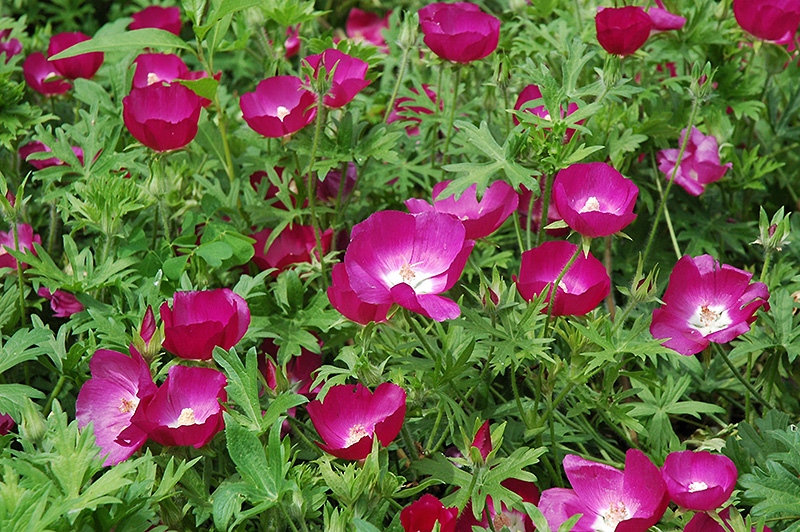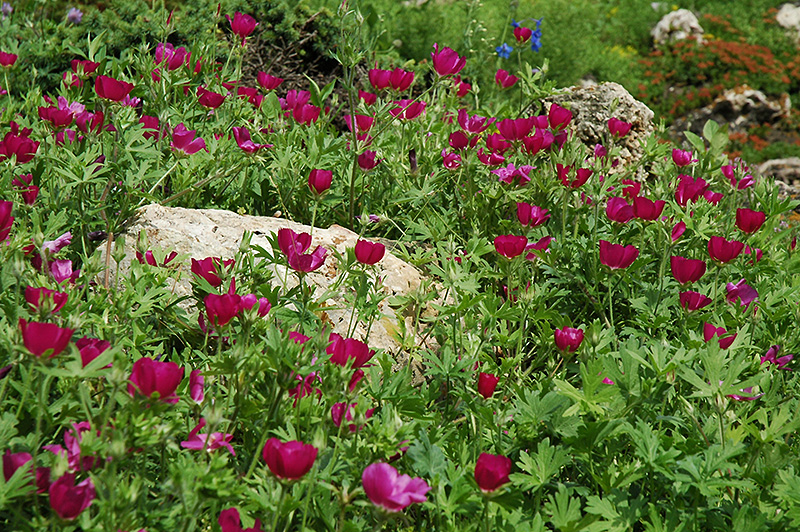Brunswick
422 Bath Road
Brunswick, ME 04011
1-800-339-8111
207-442-8111
Falmouth
89 Foreside Road
Falmouth, ME 04105
1-800-244-3860
207-781-3860
Cumberland
201 Gray Rd (Route 100)
Cumberland, ME 04021
1-800-348-8498
207-829-5619
Plant Height: 12 inches
Flower Height: 16 inches
Spread: 3 feet
Sunlight:
![]()
![]()
Hardiness Zone: 3a
Other Names: Purple Poppy Mallow, Wine Cups
Description:
A low maintenance selection that features low growing foliage with taller stems that produce gorgeous upward facing purple flowers; blooms from mid spring until the fall; looks beautiful in large groupings, in wildflower gardens or edging
Ornamental Features
Buffalo Poppy has masses of beautiful purple buttercup flowers with white eyes at the ends of the stems from late spring to early fall, which are most effective when planted in groupings. Its deeply cut ferny leaves remain emerald green in color throughout the season.
Landscape Attributes
Buffalo Poppy is a dense herbaceous perennial with a ground-hugging habit of growth. Its relatively fine texture sets it apart from other garden plants with less refined foliage.
This plant will require occasional maintenance and upkeep, and is best cleaned up in early spring before it resumes active growth for the season. Gardeners should be aware of the following characteristic(s) that may warrant special consideration;
- Spreading
Buffalo Poppy is recommended for the following landscape applications;
- Mass Planting
- Border Edging
- Groundcover
- Naturalizing And Woodland Gardens
Planting & Growing
Buffalo Poppy will grow to be about 12 inches tall at maturity extending to 16 inches tall with the flowers, with a spread of 3 feet. Its foliage tends to remain dense right to the ground, not requiring facer plants in front. It grows at a fast rate, and under ideal conditions can be expected to live for approximately 10 years. As an herbaceous perennial, this plant will usually die back to the crown each winter, and will regrow from the base each spring. Be careful not to disturb the crown in late winter when it may not be readily seen!
This plant does best in full sun to partial shade. It is very adaptable to both dry and moist locations, and should do just fine under typical garden conditions. It is considered to be drought-tolerant, and thus makes an ideal choice for a low-water garden or xeriscape application. It is not particular as to soil pH, but grows best in sandy soils. It is somewhat tolerant of urban pollution. This species is native to parts of North America. It can be propagated by division.


